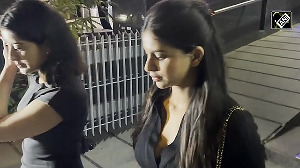Every year on July 25, Louise Brown is reminded, yet again, that she is part of history. It was no different on Friday when the world's first test tube baby turned 25 years old.
Working in a post office in Bristol, England, Brown says, "I used to think I was special. I used to think about how I was conceived quite a lot when I was about 10 or 11, but I don't think about it at all now that so many other babies have been born in the same way."
After the birth of Brown in 1978, an estimated one million babies throughout the world have been born through the in vitro fertilisation (IVF) method.
Louise's scientific 'fathers', Cambridge University professor Robert Edwards and gynaecologist Patrick Steptoe, worked at perfecting the IVF technique for 10 years before they achieved their first success.
Her birth by caesarian at a hospital in Oldham, north England, stunned the medical world and marked the start of a revolution in fertility treatment.
In the IVF technique, a woman is given fertility drugs to help her produce more eggs. The eggs are surgically removed and fertilised in a laboratory. They are then placed in the womb, which has been prepared with hormone injections.
Agencies






 © 2025
© 2025